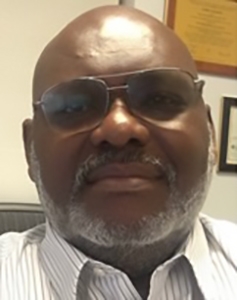Currently we are faced with a delicate dance, between saving lives and promoting and perpetuating a zombie underclass. Tens of thousands are dying from drug overdose each year. Those who are living in addiction inflict on the society, higher healthcare costs, crime rates and human services costs. The eternal question of disease vs willful indulgence still persists. The medical model lacks the reach to inspire recovery via etiology and logic. The therapeutic community and its approach are seen as outmoded. Self-help remains the most effective pathway.

Fredrick Hodges, LCSW, MC-G
Abstinence as a goal is waning in the face of the call to save lives, championed by the harm reduction movement. Language is the new focus, fortunately this could be our salvation. The umbrella of “Recovery” in its embracing of all pathways has provided cover for many new provocative and controversial approaches, including recovery centers, “safe consumption sites” or “Overdose prevention sites.” The language of Recovery in all instances and pathways indicates direction and progression. Words like “improvement,” “potential,” and “reduction”, indicate direction and an impact on “Dysfunction.”
A focus on the reduction of dysfunction in any area, physical, emotional, sexual, familial, financial, relational, etc. should be considered “recovery,” and not be negated by the consumption of any substance, legal or illicit. Alternative foci give rise to divisive debates about the authenticity of an individual’s recovery due to continued use of illicit substance or use of a supportive pharmacological agent. The DSM 5 terminology evolved from “dependence” and “abuse to use” and “use disorder,” implicitly recognizing use without dysfunction. Ideas about who is in recovery and who should celebrate that recovery should also evolve.
When I learned about the fact that formal treatment services only served 1 out of 10 people who needed help, I knew that a strategy to increase inclusion was indicated.” Although 20.8 million people (7.8 percent of the population) met the diagnostic criteria for a substance use disorder in 2015, only 2.2 million individuals (10.4 percent) received any type of treatment” (Surgeon General’s Report on Alcohol, Drugs and Health 2016).
The goal of “abstinence” was the first barrier to a more inclusive view of recovery. Many individuals who continued to use substances while improving their lives would avoid stating they were in recovery or would hide their use. This diminished what would be visible support of the recovery movement for fear of the stigma attached with “relapse,” another obsolete pejorative term. Recovery was typically seen as an all or nothing proposition.
The outcry from the community to save lives, opened the door to a wide range of interventions and a reexamination of approaches. The initiative to bring Recovery as “person-centered, life skills enhancement” to the community via peers as an interface is growing in popularity. Unfortunately, there is some confusion that I feel compelled to address. All peer services don’t qualify as Recovery Services, simply involving a peer does not qualify a service as a recovery service. Peer support is essential in the process of recovery. Peers must be involved in teaching life skills, to qualify as providing Recovery Services.
The focus of Recovery services is the restoration of self-image, voice and pursuit of best self and the maximization of life potential. This is accomplished by teaching life skills. Peer Services is a bridge between the recoveree and the community. Peer services always provides support but does not always include life skills education.
This demarcation is provided not to create a silo, but to make clear the necessary elements to qualify services provided as being Recovery services. In my limited 8-year exposure to Recovery Services, I see the restoration of voice through the teaching of life skills, as the core of Recovery Services.
In order to be successful, the Recovery movement must move to a measurement of success based on recovery, of positive relationships, and of functions on a social, physical, vocational, psychological and familial level, without regard for the continued use of substance, whether prescribed, legal or illicit. Hopefully this will foster an atmosphere of inclusion, measuring recovery by the reduction of dysfunction and “harm.”
Fredrick Hodges is a person in long term recovery for 30+ years. He is the former Assistant Director of the OASAS Bureau of Recovery Services, and lead for the 31 Recovery Centers in New York State. Mr. Hodges has had a career in human services spanning 30 years including OMH, Non-Profit residential treatment and over 21 years at OASAS in Regional Office, Enforcement, and recovery Services. You may reach Mr. Hodges at Hodgie3351@outlook.com.
References
U.S. Department of Health and Human Services (HHS), Office of the Surgeon General, Facing Addiction in America: The Surgeon General’s Report on Alcohol, Drugs, and Health. Washington, DC: HHS, November 2016. (pg. 1-8)






